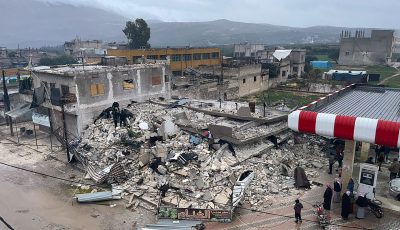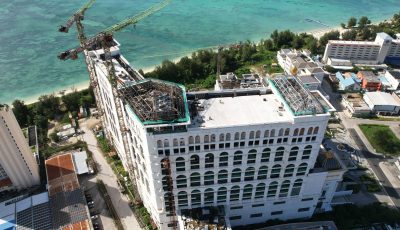Investing in our people
When the economy heads south, the ominous message instantly alerts decent people to assess realistic alternatives here or greener pasture elsewhere. It’s happening in every state where taxes are high or storm-pulped Puerto Rico where its people have flocked to New York and Florida.
The focus is finding a place for meaningful employment, good education and healthcare systems, safety and security for the children in a good neighborhood or community. Home seems to have become a strange place altogether since recent past.
It happened here nearly 10 years ago and continues to this day. The financial contraction was huge, upwards of $12 billion. Are there alternatives to rein-in lasting partnership in investments? Sticking to a single-engine economy is a perfect recipe for disaster.
We could pontificate or share sober views how this could be worked out in favor of helping simple villagers get ahead of the usual fixed or insufficient income they must endure year in and year out. Creative alternatives are staring us in the eye. It only requires embracing personal initiative on a proactive basis.
Pitch: The concept of jobs and wealth creation has been around but our focus has been on the first aspect of it. Fine. With realistic resolve, we could forego the first and pay a bit more attention to wealth creation for our people.
It need not be an elaborate scheme. Let’s start small and simple. For instance, let’s say we find a good fisherman who goes spearfishing daily, supporting his family. The fact that he knows how to fish is a skill in itself. There’s room to expand it!
How about we help him with a small CDA loan for a boat, fishing gear, ice chest, and how to market his catch. When this is successful, there’s likelihood that he’d hire an additional warm body to help him. It’s one more job for a local. We do the same for other fishermen. The goal is economic self-support for the fisherman.
We do the same with farmers too. It’s investing in our people in what’s known as wealth creation. Can do!
CW issue: Initially, attention to NMI control of immigration received national attention when the $2.1-billion apparel industry here toppled two major clothing firms between New York and LA. The labor union-led movement brought the NMI to its feet.
The other was the ability of Silicon Valley, the hi-tech industry of the U.S. to hire foreign workers from India with equivalent or better technical expertise but paid 75 percent lower than what it pays U.S. citizens. It became a race to the bottom for U.S. employees.
Today, the national political convulsion stormed up by illegal immigration has rendered a lot of employers in private industries across the country short of foreign workers. They could hire from the U.S. but it would take millions of dollars to train them over a period of time. Plus, they must pay higher wages upon completion of training.
The nationalistic view augurs well with Trump’s agenda to make America great again. But the problematic federal vetting system contributed hugely to the mess at hand. Now Trump plans to have it repealed in its entirety. The issue requires thoughtful review, mindful of states and territorial needs. A displacement of any sort would render each entity economic disaster. It requires thoughtful review.
Plan-based: The number of CW workers needed over the foreseeable can’t be drawn from what’s known as “temperamental” growth. In other words, we move along based on what business entity pops up. It would have to be premised on a set of plans. The plan should focus on economic diversification over a fickle single-engine economy. Unless this is pinned down based on a set of plans, the persistent lack of factual data would be difficult to follow. It would boil down to second-guessing our future.
As is the case with Silicon Valley, foreign workers here or in Southern California are educated and professional employees equipped with superior credentials yet paid far lower than stateside-hired employees. The money spent by industry to retain technical expertise shouldn’t be viewed strictly as foreign bodies but as industry investment.
In other words, private industry has gone out of its way to equip itself with requisite expertise to meet the challenges of a highly competitive market.
CHC’s mess: CHC’s operation is literally cash-strapped and it isn’t attributable to inefficient management. Rather it is in the law that turned it into a semi-autonomous agency without the accompanying legislation to fund it.
The latter dealt with the required legislation to fund CHC through land lease investments with MPLT. It was never completed.
Against advice to delay signing the first half, a former governor signed it in a rush, crippling CHC in a half-cocked decision. Healthcare is one of three essential areas or departments. The missing link needs immediate rectification!
It needs the money now to ensure healthcare delivery NMI-wide. It’s time to buckle down so this issue is resolved!
Drugs: The use of methamphetamine (shabu or ice) is widespread among our young people NMI-wide. Is there anyone in this administration charged with handling an implosive issue that is headed toward the pandemic level, if not already?
The problem is exacerbated by the local production of this dangerous drug! It is also saddled with prostitution where the little girls list down names and services and go after payment openly on payday Fridays. Woe!
Oops! It’s the search for safety in demagoguery that politicians look for when accused of serious misbehavior where their answers are usually non-sequitur. Seezzzz!



























